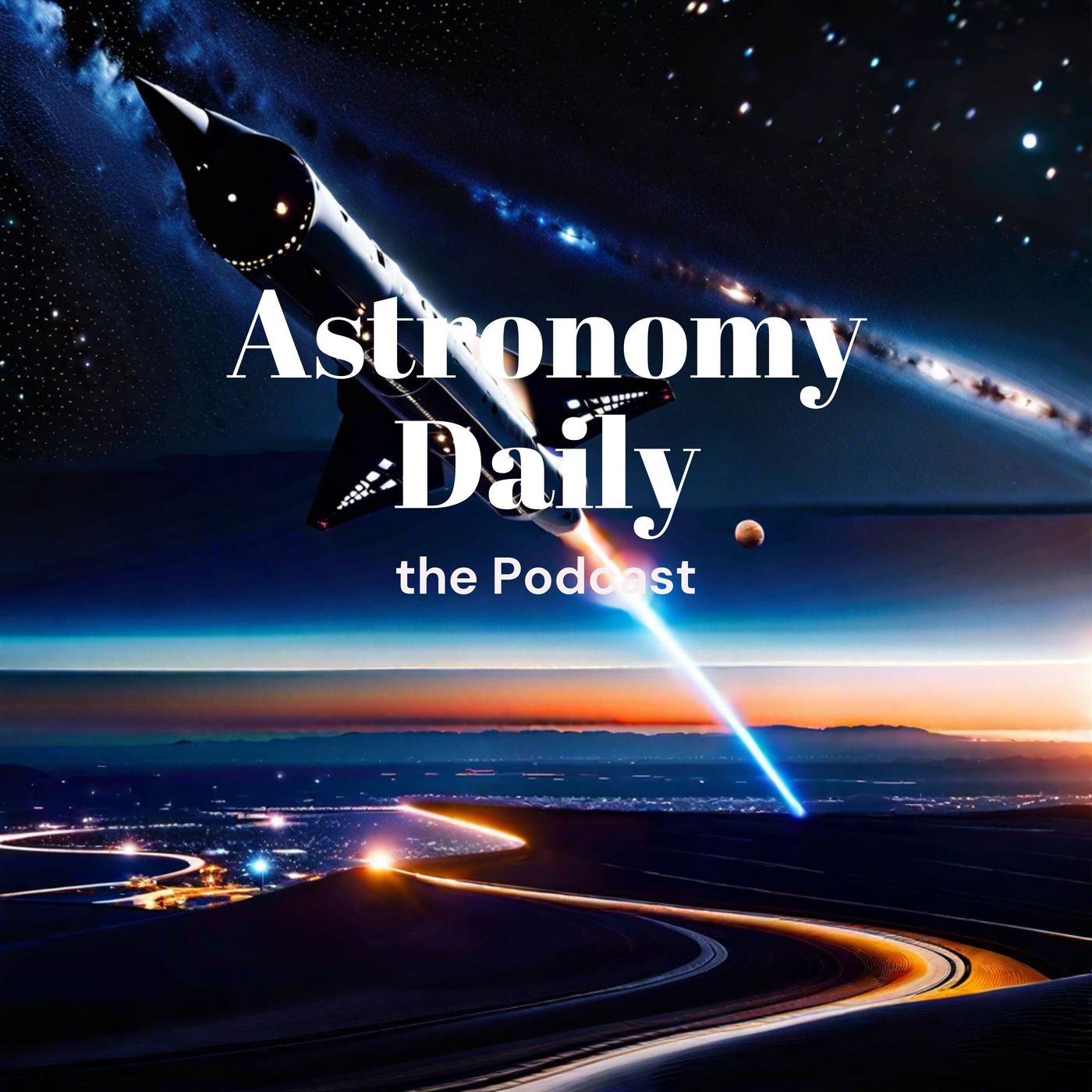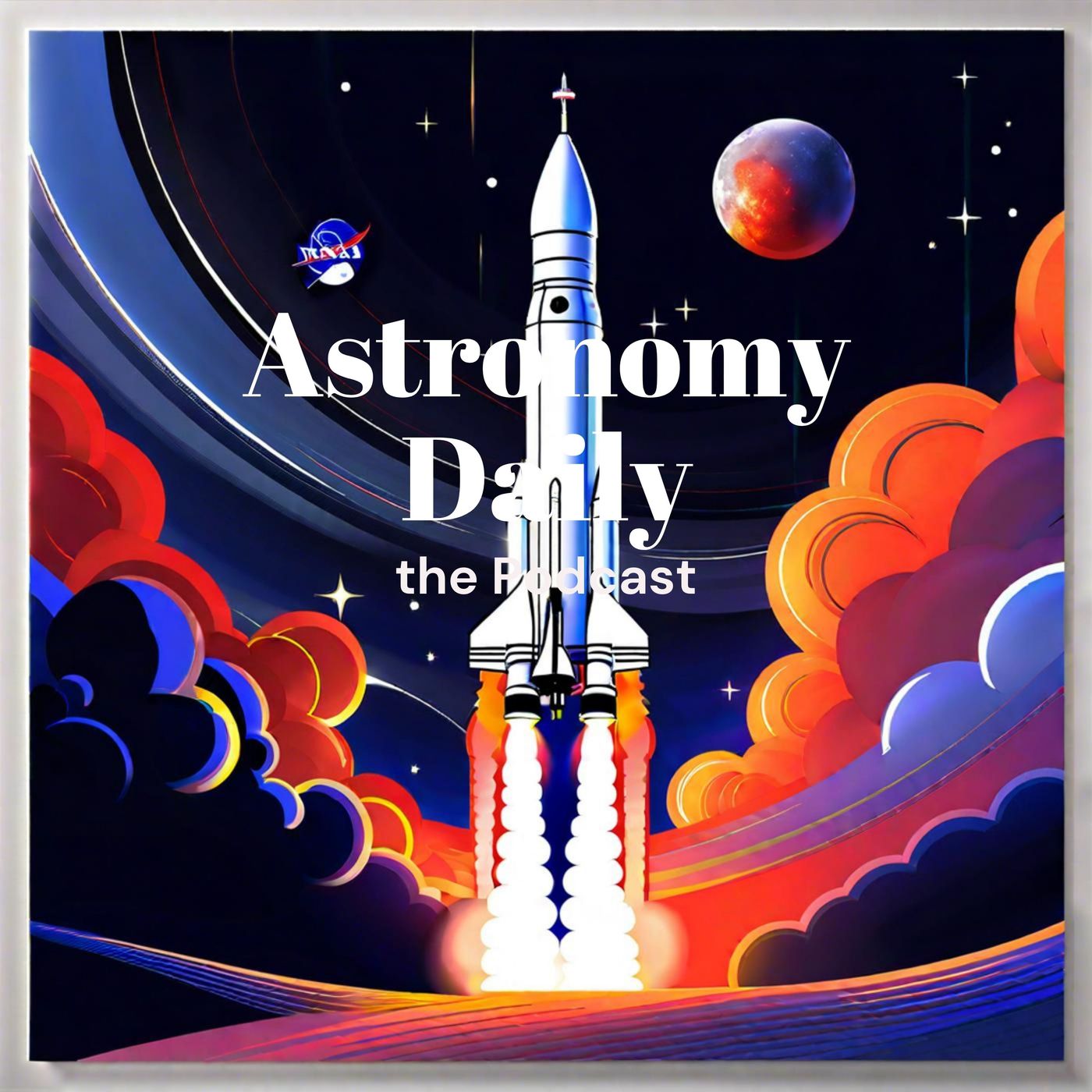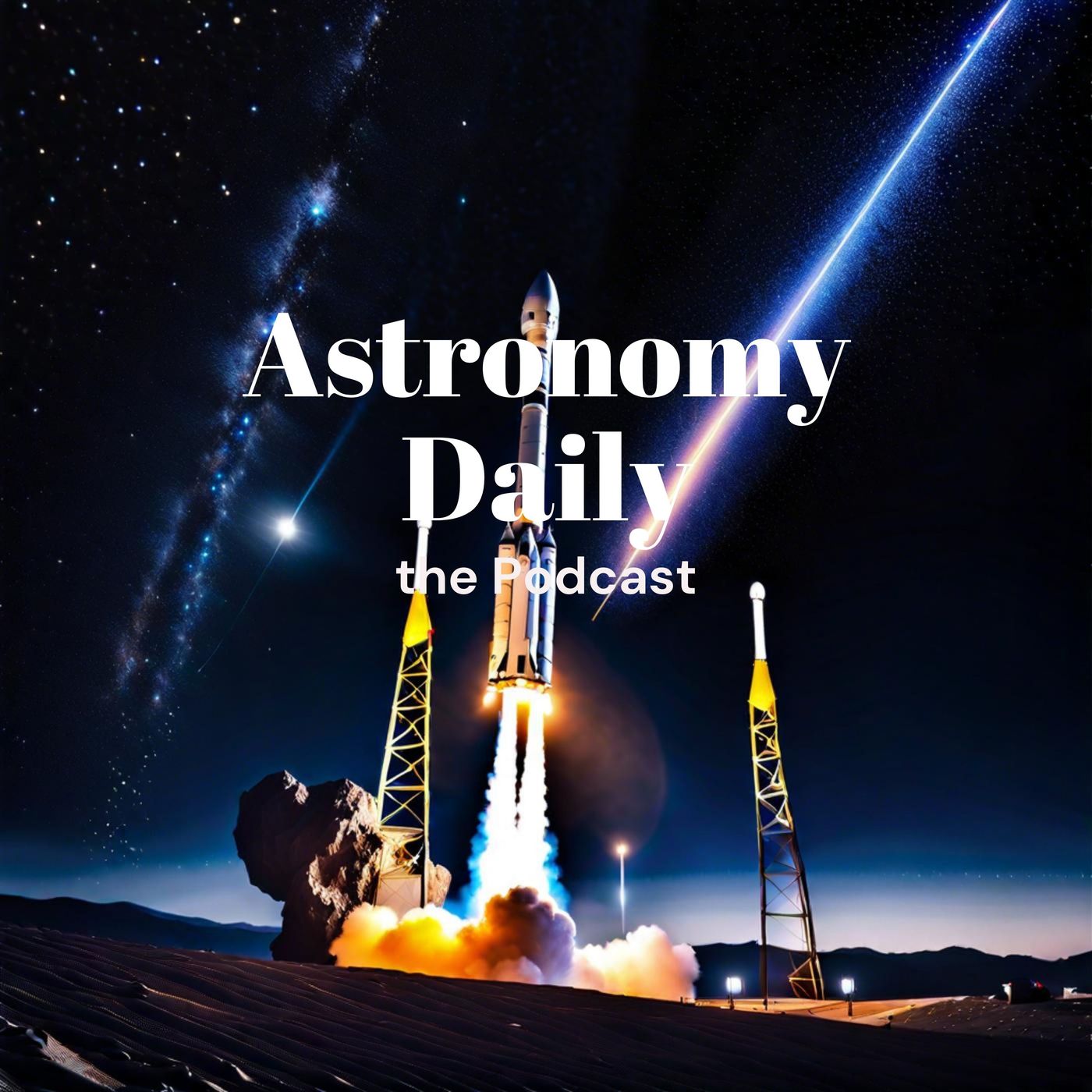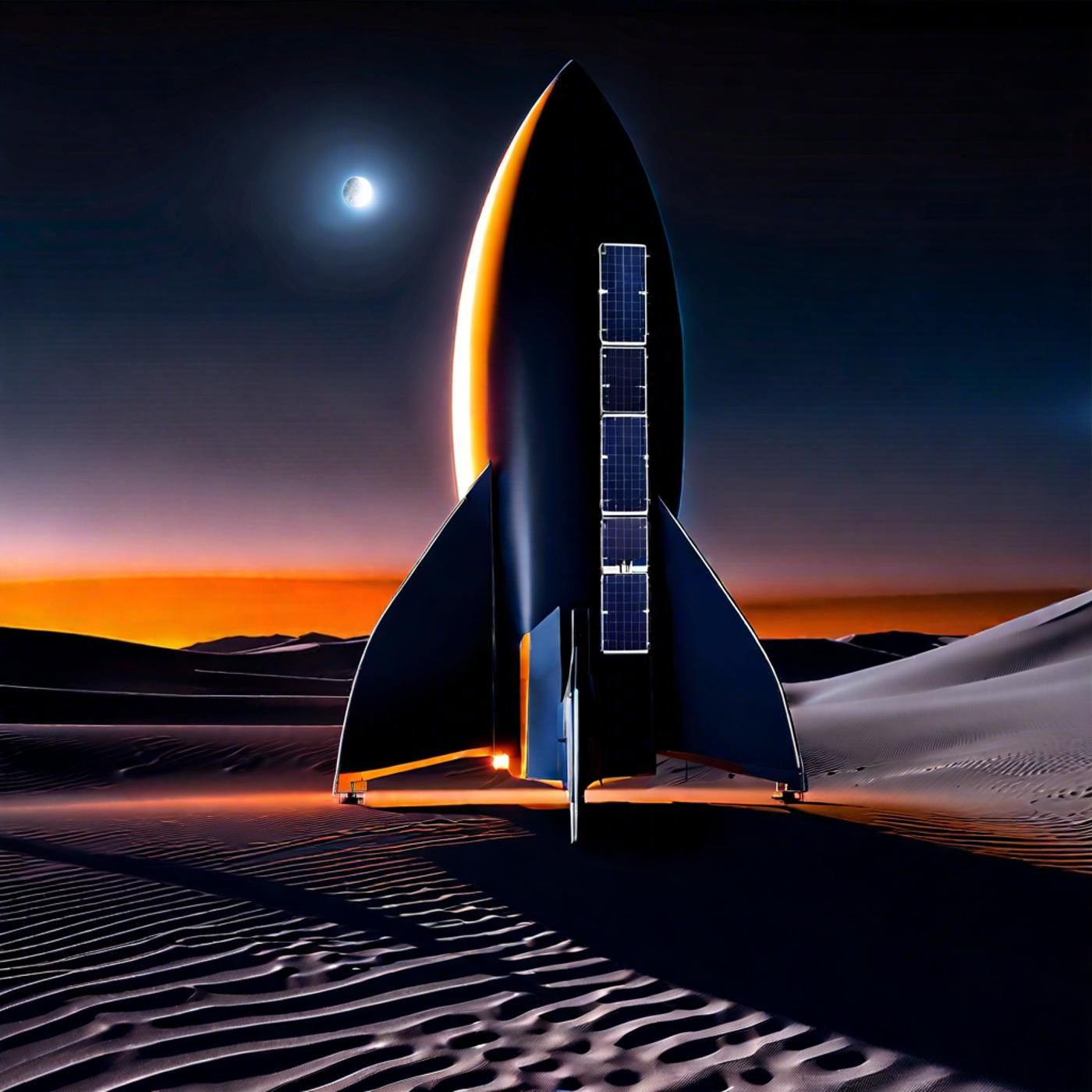S03E129: Dinosaur-Killer Asteroid's Origin, Tianwen-1's Mars Map, and Hypervelocity Star Discovery
Welcome to Astronomy Daily, your ultimate source for the latest in space and Astronomy news. I'm your host, Anna, and today we have an exciting lineup of stories that will take you on a journey through some of the most intriguing recent updates in the...
Welcome to Astronomy Daily, your ultimate source for the latest in space and Astronomy news. I'm your host, Anna, and today we have an exciting lineup of stories that will take you on a journey through some of the most intriguing recent updates in the cosmos. Whether you're a seasoned space enthusiast or just curious about what's happening up there, this podcast is the perfect place for you to catch up on the latest discoveries. So sit back, relax, and let's dive into today's stellar stories.
- **Asteroid That Wiped Out the Dinosaurs Originated Beyond Jupiter**: Recent findings have shed new light on the asteroid that ended the reign of the dinosaurs. Researchers have pinpointed that this massive asteroid, which collided with the Yucatan peninsula 66 million years ago, originated beyond Jupiter.
- **China's Tianwen-1 Mission Unveils High-Resolution Global Color Map of Mars**: China's Tianwen-1 mission has released a groundbreaking, high-resolution global color map of Mars. This map offers unprecedented detail and accuracy, surpassing previous global images with a resolution of 76 meters per pixel.
- **Hypervelocity Star Discovered by Citizen Scientists**: A hypervelocity star named J1249+36 has been identified by citizen scientists participating in the Backyard Worlds: Planet 9 project. This star is speeding through our galaxy at about 1.3 million mph, making it the first very low mass hypervelocity star discovered.
- **Ensuring Astronauts' Mental Well-Being in Space**: Life on the International Space Station (ISS) can seriously impact the performance and well-being of astronauts. Studies on the ISS are focused on understanding these effects and testing new technologies to counteract them.
For more Astronomy Daily, including our continually updating newsfeed, visit our website at astronomydaily.io.
Follow us on social media at AstroDailyPod on Facebook, X, YouTubeMusic, and TikTok. We love engaging with our community, so be sure to drop us a message or comment on your favorite platform.
For more Space and Astronomy News Podcasts, visit our HQ at www.bitesz.com.
Become a supporter of this podcast: https://www.spreaker.com/podcast/astronomy-daily-the-podcast--5648921/support.
Keep looking up, and I'll see you next time!
Hello, everyone, and welcome to another episode of Astronomy Daily! I'm your host, Anna, and I'm thrilled to have you join me today as we embark on another fascinating journey through the cosmos. Whether you're a seasoned space enthusiast or just curious about what's happening up there in the final frontier, this podcast is the perfect place for you to catch up on the latest news and discoveries in the world of astronomy. Today, we've got an exciting lineup of stories to explore. We'll delve into groundbreaking research revealing that the asteroid that wiped out the dinosaurs originated from beyond Jupiter. We'll also reveal the incredible technological achievements of China's Tianwen-1 mission, which has just unveiled a stunning high-resolution global color map of Mars. Plus, we'll marvel at the discovery of a hypervelocity star identified by ordinary citizen scientists, and we'll discuss the innovative research being done to ensure astronauts can maintain their mental well-being while living and working in space.
So sit back, relax, and get ready to journey through the universe with me. We've got a stellar show lined up for you, and I can't wait to dive into these stories. Let's get started!
Have you ever wondered about the colossal event that wiped out the dinosaurs? Recent findings have shed new light on that very asteroid, indicating it originated beyond Jupiter in the outer solar system. Sixty-six million years ago, a massive asteroid, estimated to be around six to nine miles wide, collided with what is now the Yucatan Peninsula in Mexico. This cataclysmic event not only ended the reign of the dinosaurs but also wiped out about three-quarters of the world’s species. Researchers have now pinpointed that this asteroid was a carbonaceous, or C-type, asteroid—falling under a category laden with high concentrations of carbon. These findings rule out other theories suggesting the impactor was a comet or that the debris was the result of volcanic activity. The study unraveled this mystery by analyzing the isotopes of ruthenium in the debris layer left behind by the impact. Ruthenium isotopes are particularly telling because their isotopic signature in the clay layer was almost completely from the impactor itself, offering a clear distinction between inner and outer solar system materials. The researchers concluded that the isotopic ratios matched those found in C-type asteroids, thus confirming the extraterrestrial origin.
This asteroid's journey likely began in the vast, icy reaches beyond Jupiter before it migrated inward and ended up in the main asteroid belt between Mars and Jupiter. Then, possibly due to a collision, it was sent hurtling towards Earth, sealing the fate of the dinosaurs. The Chicxulub impact, leaving a crater 112 miles wide and 12 miles deep, triggered a series of geological and environmental disasters, ultimately giving mammals a chance to dominate, and eventually, leading to the rise of humans. Understanding the origins of this asteroid not only fills a crucial gap in the story of Earth’s history but also enriches our comprehension of the solar system's dynamics. Another crucial insight is that carbonaceous asteroids, although common in the outer solar system, rarely strike Earth, making this particular event extraordinarily unique.
This new research gives us a fascinating peek into the ancient cosmic events that drastically shaped life on our planet. And as we decode these stellar secrets, it not only satisfies our curiosity but may also alert us to the nature of other space objects that could, someday, cross our path again.
Let's turn our attention to Mars, the planet that keeps on giving. One of the most exciting developments in Mars exploration comes from China's Tianwen-1 mission, which has released a groundbreaking high-resolution global color map of Mars. This is a significant leap forward for scientists and space enthusiasts alike, as it offers unprecedented detail and accuracy, allowing us to view the Martian surface in ways never possible before. So why is this map such a big deal? Prior to Tianwen-1, the best global images of Mars came from various missions, but they had spatial resolutions exceeding one kilometer, meaning finer details were often blurred. For example, the Viking Colorized Global Mosaic, one of the best prior datasets, could only manage resolutions of about 232 meters per pixel. This new map from Tianwen-1 surpasses that by a wide margin, achieving a remarkable resolution of 76 meters per pixel.
The journey to create this stunning map began in July 2022. The mission utilized the Moderate Resolution Imaging Camera (MoRIC) on its orbiter, completing 284 orbits and capturing 14,757 images to cover the entire surface of Mars. These images, with resolutions between 57 and 197 meters, provide a near-perfect mosaic of the Red Planet. Additionally, the Mars Mineralogical Spectrometer (MMS) collected a trove of data in the visible and near-infrared bands, contributing to the high-quality color representation. Under the expert guidance of Professors Li Chunlai and Zhang Rongqiao, the Tianwen-1 science team, along with collaborators, used advanced bundle adjustment technology to process the image data. By treating Mars as a unified adjustment network, they managed to reduce position deviation between images to less than one pixel. This meticulous approach ensured that the resulting map is not only high-resolution but also pixel-level "seamless."
Let's talk about an extraordinary recent discovery that has sent ripples through the astronomy community: a hypervelocity star named J1249+36. This isn't just any star - it’s speeding through our galaxy at an incredible rate of about 1.3 million miles per hour. Even more awe-inspiring, it was first spotted by some of the 80,000 citizen science volunteers participating in the Backyard Worlds: Planet 9 project. It’s amazing to see how collaborative efforts between professional astronomers and dedicated amateurs can lead to such groundbreaking findings. Hypervelocity stars are rare, and J1249+36 holds the distinction of being the first very low mass hypervelocity star discovered. Located just 400 light-years from Earth, it stands as the nearest known hypervelocity star to our planet. To put it in perspective, our Sun orbits around the Milky Way at about 220 kilometers per second. J1249+36, however, is moving at almost three times that speed, clocking in at about 600 kilometers per second.
What makes J1249+36 exceptionally intriguing is its potential trajectory that suggests it might eventually escape the gravitational pull of the Milky Way entirely. This star isn't just speeding through space; it's possibly headed for an exit from our galaxy. Such a scenario leads us to question what forces could have propelled it to such velocities. There are a couple of fascinating theories. One possibility is that J1249+36 was originally in close orbit with a white dwarf. If the white dwarf underwent a supernova explosion, it could have given J1249+36 the necessary kick to achieve its hypervelocity status. Another theory suggests that it might have been flung out from a globular cluster with black hole binaries through complex gravitational interactions. This discovery is significant not only because it expands our understanding of hypervelocity stars but also because it highlights the effectiveness of citizen science projects. By partnering with initiatives like Backyard Worlds: Planet 9, anyone with an interest in astronomy can contribute to real scientific discoveries.
So, what’s next for J1249+36? Astronomers are keen on studying its elemental composition to uncover more about its origins. Whether it’s the remnants of a supernova or a dynamical ejection from a globular cluster, this speedy star offers a stellar opportunity to unlock more secrets of our galaxy.
Life on the International Space Station is a far cry from what we experience on Earth. Imagine seeing multiple sunrises and sunsets every day from your confined space, dealing with packed schedules, and adjusting to the lack of gravity. These unique conditions of spaceflight can seriously impact the performance and well-being of astronauts. Fortunately, a range of studies on the ISS are focused on understanding these effects and testing new technologies to counteract them. One fascinating project is ESA’s Circadian Light study. This investigation is testing an innovative lighting system designed to help astronauts maintain a more natural daily rhythm, also known as circadian rhythm. An LED panel automatically adjusts the light spectrum throughout the day to mimic natural daylight conditions on Earth. This study aims to see how this lighting system influences sleep, stress levels, and overall well-being. The insights could also benefit shift workers and those in extreme or remote environments back on Earth.
Earlier, ESA conducted the Circadian Rhythms investigation, which looked at how daily rhythms are affected during long space missions. In space, the cycles of light and dark don’t match the 24-hour routine we’re used to. Traditionally, measuring core body temperature has been the gold standard for determining circadian rhythms, but it can be quite invasive and inconvenient. For this investigation, researchers developed non-invasive skin sensor technology that continuously records body core temperature over extended periods. As we look towards missions to the Moon or Mars, communication delays will be inevitable. The Comm Delay Assessment study explored how these delays might impact astronauts dealing with medical and other emergencies. The findings showed that communication delays increase stress and frustration, reduce task efficiency, and impair teamwork. However, the study also highlighted potential countermeasures, such as enhanced training and improved teamwork strategies, to mitigate these challenges.
Moving on to mental health, the NeuroMapping study has been investigating how spaceflight alters brain structure and function. Not only did this research find significant changes in brain connectivity, but it also identified substantial increases in brain volume linked to longer missions. The findings suggest that intervals between missions should be more than three years to allow for full recovery. For a more personal perspective, the Journals investigation had crew members write daily entries. These entries provided valuable insights into how various factors like work, sleep, and group interactions affect mental well-being in space. The study’s findings are helping improve living and working conditions for future astronauts. Lastly, ESA’s VR Mental Care project is exploring the use of virtual reality technology to help astronauts relax and maintain better mental health during their missions. Using a VR headset, astronauts can escape to virtually simulated environments, potentially easing stress, anxiety, and even post-traumatic stress disorder.
Thank you so much for joining me on this episode of Astronomy Daily. I hope you found our journey through the latest discoveries in space and astronomy as fascinating as I did. I'm Anna, and it's always a pleasure to share this cosmic adventure with you. If you want to stay updated with the latest happenings in the universe, don't forget to visit our website at astronomydaily.io. There, you can sign up for our free daily newsletter, read our blogs, and catch up on all the latest space and astronomy news with our constantly updating newsfeed. Plus, you can listen to all our back episodes anytime. We're also on social media! Just search for AstroDailyPod on Facebook, X, YouTube, and TikTok to find our latest updates and join our community of fellow space enthusiasts.
Once again, I'm Anna, and this has been Astronomy Daily. Keep looking up, and I'll see you next time!
New to Astronomy Daily - The Podcast?
Here are some great episodes to start with.


















